1883-1892 James Hopper
James Hopper, born in 1856, began working in the racing industry as a jockey, but switched to training for Lord Stamford at Enville Hall near Wolverhampton. He was then appointed Head Lad to Robert Peck at Beverley House, Newmarket, although roles were switched when he trained Hackness, owned by Robert Peck, to win the 1882 Cambridgeshire. James then resided at a new house in 1883 which he named Hackness Villa in honour of his Cambridgeshire winner. He continued to train for Peck next door at Beverley House, and in 1883 he had an early season success when Knight of Burghley won the Lincoln Handicap, a feat which Hopper repeated 3 years later when Fulmen won the 1886 Lincoln. In May 1885 Messrs Feist & Son advertised for auction Hackness Villa, which they described as a modern racing stable with dwelling house and 15 spacious, well-ventilated boxes. It is unlikely to have sold because on Monday 4th July 1887 the same auction house offered the freehold racing establishment for sale again, this time at the request of Mr & Mrs Hopper. Tragically James's wife died at an early age, which badly affected him and caused him to turn to alcohol. On Sunday 22nd May 1892 his son, Matthew, found James had cut his own throat whilst in a state of alcoholic delirium. Although Matthew managed to bandage the wound and call a doctor, James remained in a bad way and, by Thursday the wound had opened again. James died from his self-inflicted wound on Thursday 26th May 1892.
1882 Goodwood Stakes FORTISSIMO 100/30 fav owned by Mr J Davis, trained by James Hopper and ridden by Charles Wood
1882 Cambridgeshire HACKNESS 100/12 owned by Robert Peck, trained by James Hopper and ridden by Sam Loates
1883 Lincoln Handicap KNIGHT OF BURGHLEY 100/12 owned by Mr J Davis, trained by James Hopper and ridden by Charles Wood
1886 Lincoln Handicap FULMEN 100/6 Owned by Mr Naylor, trained by James Hopper and ridden by Jimmy Woodburn
William Rogers, son of the much-celebrated middle-century jockey Sam Rogers, was always likely to harvest a career as a trainer. In July 1885 he was appointed private trainer to Baron de Hirsch, and took possession of Grafton House and Stables which the Baron had purchased from Alec Taylor. On Monday 22nd February 1892 William married Florence 'Florrie' Gertrude Ruse, eldest daughter of Gus Ruse, a Newmarket publican. By December 1892 William Rogers was appointed by Prince Soltykoff to be his private trainer at Kremlin House Stables. However, within weeks a statement was made which said, 'W Rogers has been let go for failing to come to terms with respecting the training of the select stud of racehorses belonging to Prince Soltykoff' He was replaced by Tom Fordham on Monday 12th January 1893. Rogers moved to Hackness Villa which had become vacant after the suicide of James Hopper. He and his wife remained at Hackness Villa, where he operated as a public trainer, until the start of the new century.
1901-1905 Joseph Day
Joseph Day, born in 1860, was apprentice to Matthew Dawson at Heath House Stables in 1875, riding both Silvio and Melton in their work prior to their respective Derby victories. To gain further experience he assisted the American trainer Jacob Pincus who trained Iroquois to land the Epsom Derby, even travelling to America with him. He then took up a post as Head Lad with Matthew Dawson before taking on the post of private trainer to the Duchess of Montrose, followed by Sir J B Maple. Finally, he set up as a public trainer, ending his days at Hackness Villa, listing among his principal patrons Sir T R Dowar, Sir Eldon Gorst and W C B Beaumont. He had taken over as trainer at Falmouth House in 1895 after trainer Percy Peck had parted company with Sir John Maple, although his stay was brief. During his short stay at Falmouth House, John/Joseph trained the 1895 2000 Guineas winner Kirkconnel (SR 1966) for Sir John, when ridden by John Watts. By the end of the 1896 season Sir John had replaced John/Joseph Day with Willie Waugh, leaving Joe Day to move to Albert House Stables. He remained there until the turn of the century, also renting Hackness Villa where he replaced William Rogers. Throughout his time at Hackness Villa he was troubled by ill health, suffering haemorrhage of the lungs in September 1902. He never really fully recovered and died on Saturday 1st September 1906 aged 46.
For over 4 centuries racing has been staged in Newmarket, but how have the racecourses evolved from an initial starting point at Fleam Dyke Pumping Station, some 8 miles from the town, with a winning post barely 200 metres from the town centre, into two world recognized, excellent racecourses and a universal acceptance that Newmarket is the Headquarters of racing?
To access an interactive racecourse map showing over 50 individually named racecourses CLICK HERE. The map will enable you to:-
1. Determine when extended races over 8 miles, 6 miles and 4 miles began to be replaced by the courses now visited by thousands annually;
2. Consider how the challenge of crossing the Devil's Dyke was overcome;
3. Contemplate why the town no longer has a steeplechase course despite having at least 5 courses during the past 2 centuries;
4. Examine the practicalities of having up to 48 starting posts and winning posts;
5. Appreciate that it was not financially viable to have an open racecourse spread widely across the heath, with a finishing post barely 200 metres from the town centre;
6. Research how and why the Cambridgeshire Handicap has been contested over 3 different courses.
NOTE: The map does not make mention of 2 particular courses:-
(i) Sefton Course (also known as the Cambridge Road Course)
Source: 1970 Raceform. Used from 1959 to 1975.
(ii) New Circular Course
The Circular Handicap was run on Friday 29th October 1875 on the New Circular Course of about two miles.
Source: London Standard (30th October 1875): ''the horses started near the Turn of the Lands, ran back way of the Cambridgeshire Course towards the Ditch, and afterwards proceeded down the side of the Tan Gallop, and turned into the Rowley Mile near the Bretby Stakes starting post, finishing at the stand at the end of the flat. Except in the hollow near the Cambridgeshire start the runners should have been visible all the way if the sky had been bright and clear''.
Another report hoped that the Circular Handicap would become a feature in future programmes, as it would be contested in front of the new grandstand which would be completed in about a year and would be able to accommodate thousands.
(I am grateful to Tim Cox for bringing attention to these 2 courses.)
Enjoy researching the intriguing history of Newmarket and its many racecourses.

May 1905-1914 Albert John Gilbert
In December 1902 Albert John Gilbert was in charge of training for J Musker at Green Lodge Stables, but by the end of 1904 he had severed connections with Musker and was succeeded by Charles Waugh. While Musker moved his horses to Carlburg, Albert Gilbert transferred to Hackness Villa to train privately for Sir Maurice Fitzgerald. Joe Day had given up training by then because his health was so poor, and he died shortly afterwards.
1914-June 1919 Taken over by the Military
Hackness Villa Stables, owned by Martin Gurry, was taken over by the military during the First World War, and even by February 1919 the military had not quit or overhauled the boxes to make them ready to be stables again.
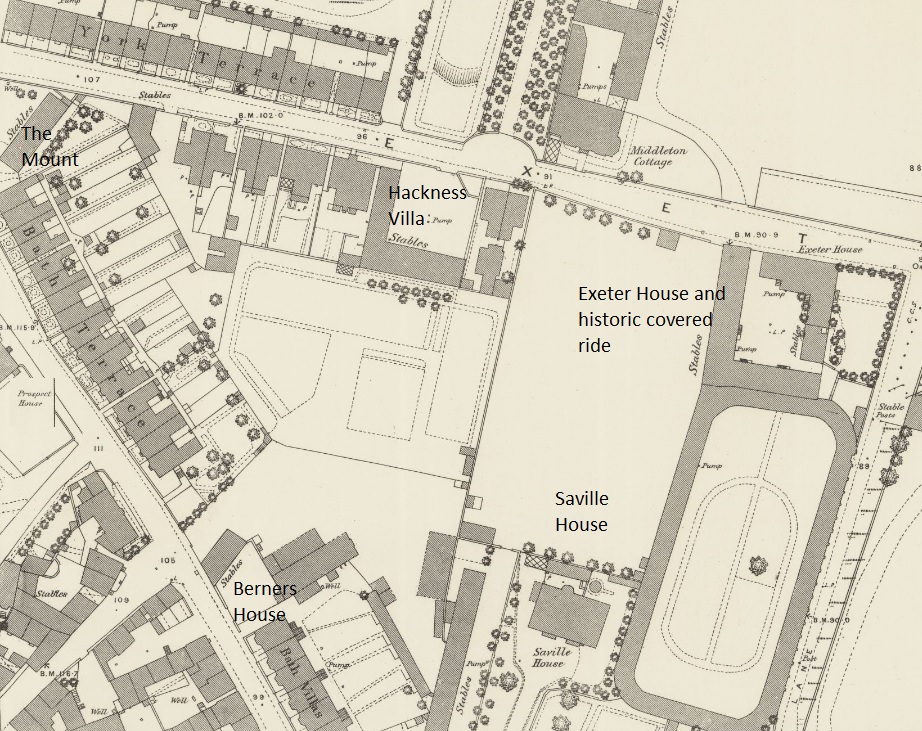
Robert Jack Colling was born at Great Habton near Malton on 15 July 1900 and had his first ride in public aged just 11 when partnering Judge Peter in the Clifton 3-y-o Handicap at Thirsk on 3rd May 1912, but finished down the field. He enjoyed a brief riding career on the Flat, guiding Blink into third place in the 1918 2000 Guineas behind the brilliant Gainsborough (SR 2116) and was then runner-up in the New Derby at Newmarket behind the same horse. As weight increased it became obvious that life as a Flat race jockey was not possible and he briefly switched to jumps. After the war he was released from the Army at the beginning of 1919, and in February was appointed private trainer to Mr C T Garland, a rich American banker who had become a British citizen in 1914 and served in the ranks. Although Colling began training in Malton, Mr Garland then rented Hackness Villa from Martin Gurry in Summer 1919, which at that stage stretched to 14 boxes. Unfortunately, Mr Garland died suddenly in June 1921 but he left his Scaltback Stud to Bob Colling who remained there until April 1926.
Autumn 1923-October 1924 William Griggs
William 'Billy' Griggs was born at Gillingham on 16 May 1884 and, like his brother Walter, became a jockey and then a trainer. In September 1900 he was apprenticed to Robert L V Sherwood, riding with a full licence from 1905 to 1914 and from 1918 to 1923. Griggs rode a string of big handicap winners and the 1920 1000 Guineas on Cinna. He enlisted at the end of 1914 and in 1915 he was a PO in the Naval Air Service. He played a prominent role in the dash to save survivors of the steamer Tara from the Senussi in March 1916 and notably commanded an armoured car the following year. He was awarded the Military Cross in 1917, the Silver medal for Military Valour (Italy), and the Order of the Crown of Italy the same year. He was promoted Lieutenant in 1918. In Spring 1923 he went to the Red House, providing temporary accommodation for an early French raiding party of Marcel Boussac and his then trainer, George Stern. In autumn 1923 he took over at Hackness Villa and its stabling, but did not receive a Newmarket Flat licence until the following year. He trained his first winner on 21 August 1924 and in October 1924 he bought Stratford House and stables, training there for the rest of his career.
1920 1000 Guineas at Newmarket CINNA (SR 1958) 4/1 owned by Sir Robert Jardine, trained by Tom Waugh and ridden by Will Griggs
George Harvey Blackwell served his training apprenticeship with Matt Dawson at Heath House before branching out on his own in 1892, gradually increasing his stable strength. By 1896 Blackwell had been invited to take charge of the 11 yearlings of Baron de Hirsch. George, based at Beverley House Stables, landed the Doncaster Cup in 1898 with Pinfold for Sir James Miller, as well as securing the 1898 Cesarewitch and Manchester Handicap with Chaleureux. A year later he trained Newhaven II to win the City and Suburban Handicap at Epsom. However, it was in the early years of the 20th century that George enjoyed his most successful period, winning the 1901 1000 Guineas with Aida (SR 1878) and then landed the 1903 Triple Crown with Rock Sand (SR 2051). At the end of the 1903 season he moved to La Grange Stables, taking his champion Rock Sand with him.In July 1906 the Sporting Life listed all of the Newmarket Stables together with their respective trainers; George Blackwell was listed at Lagrange. In 1920 George sold La Grange to Lord Glanely and moved to Sunnyside (Nunnery Stables) where he completed a unique double, having trained the Epsom Derby winner in 1903, he completed the unusual double training the 1923 Grand National winner Sergeant Murphy. In March 1924 he purchased Hackness Villa Stables from the executors of Martin Gurry, although he did not use it as his training base until 1924, leasing it out on occasions, and finally selling it in March 1935. One person he leased it to was Fred Butters who needed a stable late 1926 after he had left Beverley House but before he took over at Heath House.
Captain Percival Ayfon Onley Whitaker, born in Suffolk on 31st May 1870, was educated at Wellington College before launching a successful military career, firstly in the Sussex Harriers and later in the Essex Militia. He was a noted amateur jockey, winning the Amateur riders Championship in 1907 with 30 wins, although his most successful year was in 1908 when he won the Championship again, with 26 wins, and also partnered Rory O'More to success in the 1908 National Hunt Steeplechase. He then finished third on Lawyer III in the Grand National behind Rubio, but the horse died the next day, and in a post-mortem it was revealed Lawyer III had only one lung. Percy was an equally accomplished trainer on the Flat and over jumps. In 1923 he partnered Silvo to success in the Aintree Grand Sefton Chase before the horse finished a creditable 3rd in the 1924 Grand National behind Master Robert. In 1929 Percy moved his training base from St Giles, Salisbury to Paddock Cottage, Newmarket where he achieved some of his best Flat race wins. These included Knight Error winning the 1931 Lincoln Handicap, but in January 1932 Captain Whitaker leased Hackness Villa Stables from George Blackwell. He was at Hackness Villa until March 1935, although he is thought to have leased some boxes at Primrose Cottage for a year in 1933.
In March 1935 Hackness Villa was sold by George Blackwell to John Upton Gaskell and in January 1936 Gaskell appointed an experienced head lad, the former NH jockey Thomas Thatcher. Gaskell already owned Exeter House Stables, training there for himself.
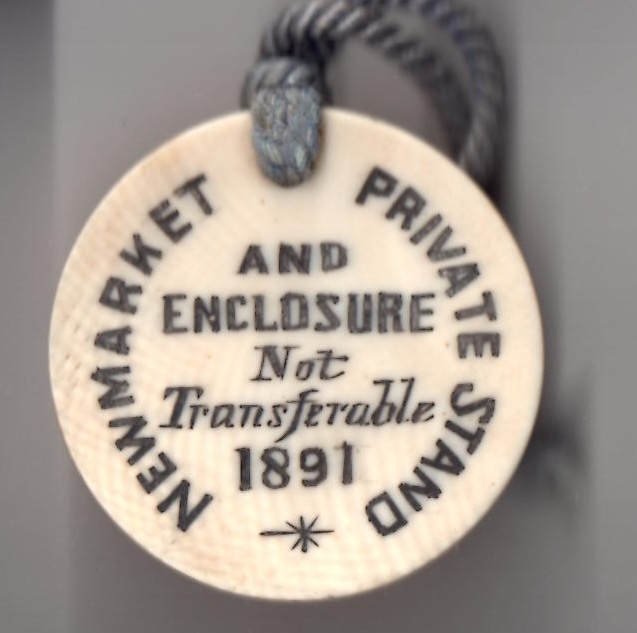
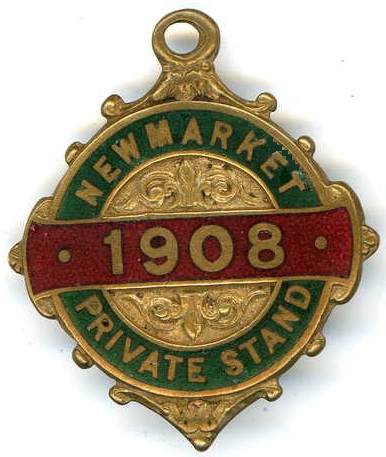
1958-1961 Henri Jelliss
Henri Albert Jelliss, son of 13 times champion jockey of Belgium Charles Jelliss, was born at Mons, Belgium on 23rd November 1891. After schooling he took up an apprenticeship with Tom Jennings junior, opening his winning account aboard Rhyme at Newmarket on 5th May 1908 aged 16 and weighing just 6 stone. He won the 1911 Cambridgeshire with Long Shot for Solly Joel, while later in his career he won 3 English Classics. He retired from riding at the end of a successful 1935 season, launching his training career at Beverley House Stables, which were owned by his father-in-law George Blackwell. He gained an early success just 2 days into the Flat season when Paladin won the Chaplin Plate at Lincoln. He won the 1939 Wokingham Stakes at Royal Ascot with America, and in his first full season after the War he won the 1946 2000 Guineas with Happy Knight ridden by Tommy Weston. At the end of that season Henri's son Harry was enticed away from Beverley House by Dorothy Paget to train privately for her at Palace House Stables, although Henri continued to act as assistant to Jack Jarvis at nearby Park Lodge Stables. In 1950 Henri requested that any remaining horses Dorothy Paget had at Beverley House should be removed, and she duly transferred them to Fulke Walwyn at Lambourn. Henri was still churning out the winners in the 1956 season, receiving a boost when Miss R Parsons sent a good number of fillies to Beverley House Stables to be trained by him, although within a season Jelliss had sold the training establishment to Humphrey Cottrill in readiness for the 1958 season, moving instead next door to Hackness Villa. He remained at Hackness Villa for the next 4 years before retiring at the end of the 1961 season in his 70th year. He enjoyed almost a decade of retirement, but died on 16th June 1971 aged 79.
Arthur Freeman
Arthur Freeman, born on 7th January 1926, was the son of Bill Freeman and brother of Bill (junior) who rode Cap-A-Pie to win the 1927 Ebor Handicap 100/7 for Lord Derby. Arthur began as an apprentice at 13 with Hon. George Lambton, although the War intervened where he served as an infantryman. When he returned to Newmarket after the War he found he was too heavy to continue on the Flat, so he embarked on a National Hunt career, joining the stables of George Armstrong. Arthur's great love was the Grand National in which he first rode in 1953, partnering the 50/1 Wait and See which was brought down early on. In 1954 he joined Peter Cazalet's Fairlawne Stables near Tonbridge, Kent, while in the 1955 National he was going well on the Queen Mother's Ma's Tu Vu before falling at the fourth last fence. After two more unpromising, unsuccessful rides he was lucky to find himself aboard Mr What, which Arkle's jockey Pat Taaffe should have partnered, although Arthur still had to put up 6lb overweight. However, conditions were right for Mr What and he won at 18/1 for owned David J Coughlan, beating Tiberatta and Green Drill by 30 lengths and 15 lengths. The season went on to be Arthur's most successful, for in late December he rode Lochroe to victory in the King George VI Chase. Two years later he was forced to retire from race riding after fracturing his skull, but immediately turned his hand to training, basing himself initially in stables on the outskirts of Royston, Herts. It was to be at least 3 years before he trained his first winner, although he did transfer to Newmarket, where he took over Hackness Villa Stables. One of his most high-profile wins as a trainer was at Cheltenham when Tibidabo 10/1, in the colours of Mrs Gibson, won the National Hunt Centenary Chase in the hands of Terry Biddlecombe on Saturday 29th October 1966. Arthur never did win his beloved Grand National as a trainer, but there was the one which got away. In 1962 he purchased a horse called Specify which won him a lowly hurdle race before he decided to sell it to the Newmarket trainer Dennis Rayson at his Exning yard who, in turn, sold it on to John Sutcliffe, then training at Epsom. Specify turned into a very good chaser and landed the 1971 Grand National. In March 1988 Arthur died at Bury St Edmunds hospital.
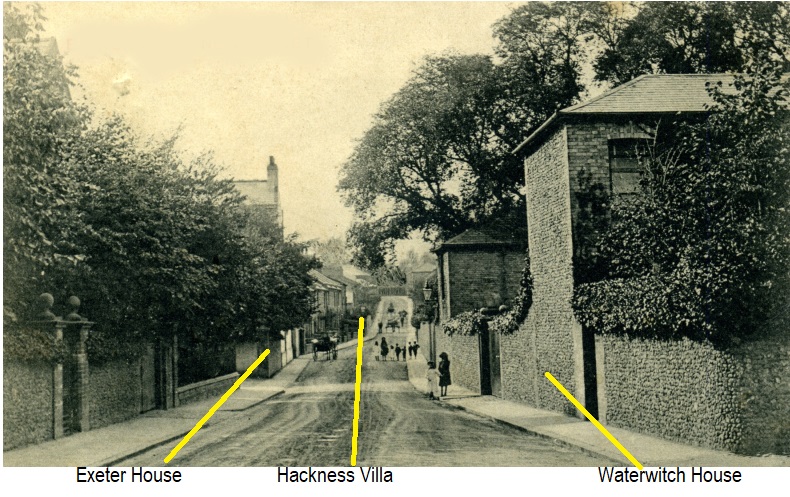
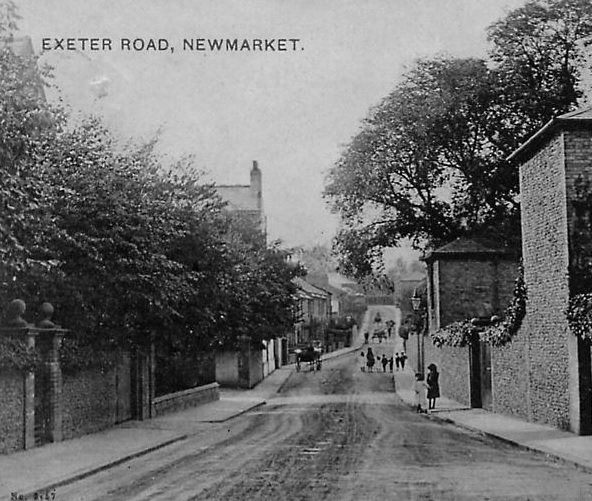
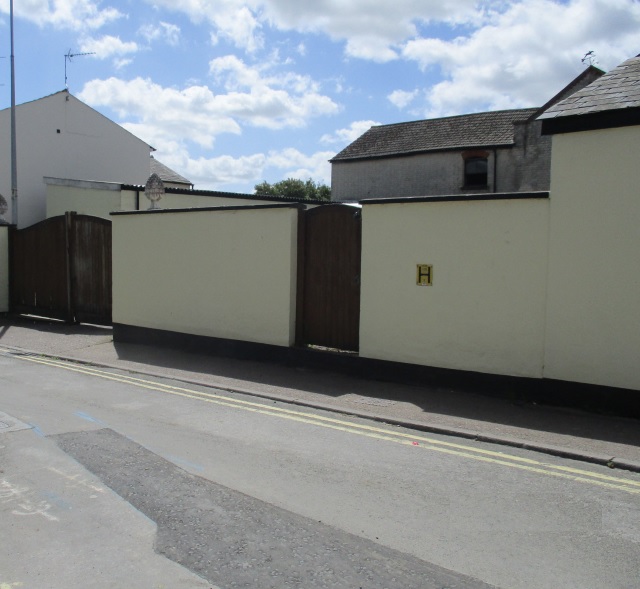


1977-1987 Gerry Blum
Gerry Blum, born in 1925, began as a 14-year-old apprentice and at the age of 20 was working for Walter Earl when he looked after a filly called Sunstream, owned by the 17th Earl of Derby. Sunstream (SR 2032) went on to win the 1945 1000 Guineas at 5/2. After his riding career he successfully applied to train. In 1968 newspapers reported that George Blum, who trained at Bloomsbury Cottage Stables, had applied to extend his licence to include National Hunt horses. This request was specifically to enable him to train the jumpers Cardington Fair and Prospect Hill. Gerry later went on to train at Hackness Villa Stables and was certainly there in 1987. He trained in Newmarket for 28 years and lived to the ripe old age of 90, dying in March 2017.
1987-1992 Adrian Lee
Adrian Lee, born on 9th June 1959, made a name for himself as a trainer in England and abroad. He was pupil assistant to Captain Tim Forster between 1977 and 1979, followed by a year with Fred Winter and a further year with Arthur Moore. He then moved on to be assistant to Sir Mark Prescott between 1980 and 1982, followed by a 4-year spell assisting Michael Jarvis. He then believed the time was right to launch out on his own, successfully applying for a licence in 1987 where he trained at Hackness Villa before moving to train in Dubai.
1993-1999 Dave Morris
Dave Morris was based in Ryedale, Yorkshire during his riding days of the 1960s and 1970s, but then he turned his hand to training. He moved south to Newmarket and was based in Hackness Villa Stables in 1999, opening his stables to the public during Newmarket's 11th Annual Open Day.
Don Cantillon
Don Cantillon, born in Cork, proved himself to be a handy amateur rider before making his way to Newmarket, lodging at the Rutland Arms and enquiring which of the many stables trained National Hunt horses. He began riding out for Harry Thomson Jones and rode over 100 winners over a 14-year period with Tom Jones at Green Ridge Stables, the majority in point-to-point races. Don was put in charge of a small stable of horses at Marlborough House which Tom Jones used as an overflow yard, having previously gained experience in California after completing his studies at Worcester Agricultural College. Don successfully applied for a permit to train, basing himself at Hackness Villa, and making a name for himself for grooming difficult horses. He had a special skill which enabled him to run up sequences of wins with a number of horses, including Pegasus Bay, Sea Breaker, Stratton and La Estrella, who broke the record for most wins on the all-weather circuit when he recorded win number 27 aged 13.



